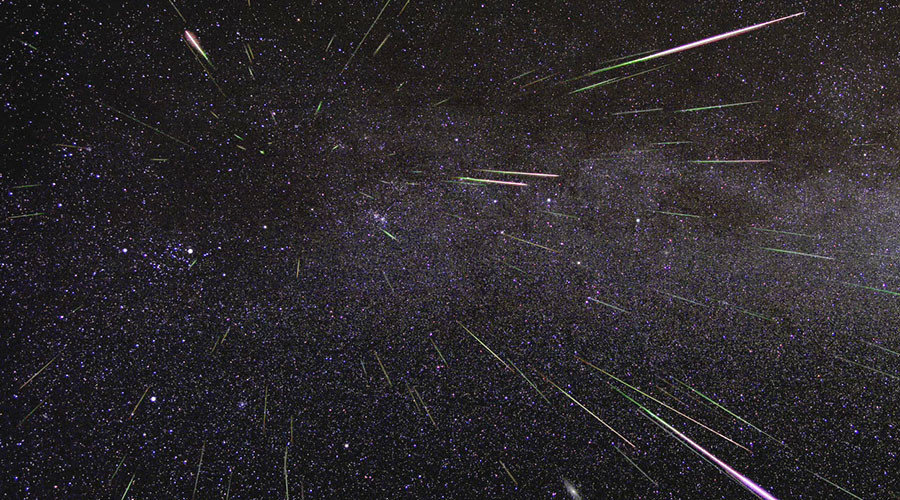
© NASA
NASA is advising the world to pack up and go hiking on the night of August 11-12 to watch a spectacular shooting star show, as the annual Perseid meteor shower is forecast to beat all records this year.
"
Forecasters are predicting a Perseid outburst this year with double normal rates on the night of August 11-12," Bill Cooke, from NASA's Meteoroid Environments Office in Huntsville, Alabama,
said on Tuesday. Cooke noted that under perfect conditions, we will be treated to up to 200 meteors every hour.
The "outburst" the NASA man is referring to means this year's cosmic dance is set to be far more crowded than usual. The last time the event happened on such a scale was 2009.
The Perseid meteor shower wows spectators with its swift and extremely bright meteors, traveling at a speed of 60km per second. A Perseid meteor is a small piece of debris left in the wake of the ancient Swift-Tuttle comet, which orbits the sun every 133 years. Despite these visits into the inner solar system being so rare, each of them gives off trillions of comet particles. When Earth passes through this trail of debris, the particles enter the planet's atmosphere and break up in bright specs of light.
From down here they seem to fly from the direction of the Perseus constellation, leading to the meteors being given the name "Perseids."
"Here's something to think about: The meteors you'll see this year are from comet flybys that occurred hundreds if not thousands of years ago. And they've traveled billions of miles before their kamikaze run into Earth's atmosphere," Cooke says.
Earth flies through the trail of these comet particles every August, usually grazing the edge of the debris stream. But its trajectory shifts somewhat every now and then thanks to Jupiter's gravity pull, and according to NASA experts this year our planet may be getting a seat in the front row, flying closer to the middle, where there are more particles. In fact, they claim that three or more debris trails will cross paths with Earth in but a few days.
According to NASA, the best opportunity to watch the Perseids will be between midnight and dawn on the morning of August 12. If you're not all that into getting out in the fresh air, the agency has also promised a live broadcast of the shooting star display on its Ustream
channel starting at 2am GMT.
The Perseids are no danger to Earth, as even the largest ones mostly burn up in its atmosphere some 80km above the planet's surface. But the outburst could still land spacecraft in a spot of trouble: the bigger particles are capable of causing minor damage to the hulls of rockets and satellites.
Let's hope for the best though, and get the binoculars ready.

Reader Comments